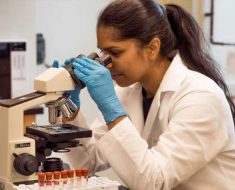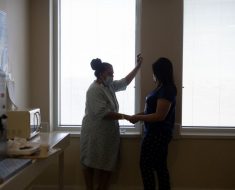States that mandated cardiopulmonary resuscitation (CPR) and automated external defibrillator (AED) education in high schools had higher rates of bystander CPR for an out-of-hospital cardiac arrest than those that did not, a retrospective cohort study suggests.
Overall, the rate of bystander CPR after an out-of-hospital cardiac arrest was 40.7%, with a lower number of cardiac arrests receiving bystander CPR in states without a law compared to those in which a law was enacted at 39.5% of cases, or 49,973 arrests, vs 41.6% of cases or 68,633 arrests, reported Victoria L. Vetter, MD, MPH, of the Children’s Hospital of Philadelphia in Pennsylvania, and colleagues.
If more interested bystanders are trained as a result of laws requiring CPR instruction in high schools, the outcomes following cardiac arrest may improve, Vetter and colleagues note.
“States with laws passed should enact and implement them in a uniform fashion as soon as is feasible,” they write. “Assistance to schools to help with CPR/AED education in low socioeconomic minority communities has the potential for the greatest benefit. We encourage states that do not have laws passed or enacted to enact such laws as soon as possible to benefit all their citizens.”
When CPR and an AED are not introduced promptly in cases of cardiac arrest, the results are dismal, especially for neurologic and other organ function, the authors note, so a push for bystander CPR has occurred recently. It’s known that about 20% of the population is present in schools on a school day, including students and teachers, as well as staff, grandparents, or parents, noted Vetter.
Over the past 10 years, there has been an increase in the number of states with mandates for CPR and AED education in the school curriculum, Vetter said.
“[They do] not require that you get a card or go through a 3-hour course because that is really not the way a lot of our younger generation learns. They learn in fairly quick, more direct methods, whether it be in person or online. So, states began to pass these mandates or laws that require CPR and AED education to be a part of the high school curriculum,” Vetter told theheart.org | Medscape Cardiology in an interview.
“What I say to physicians, independent of whether your state has these laws or not, should be encouraging patients of any age, who have the ability to get training on how to perform CPR, to do it, because it may be important to save a loved one or someone they may come across in the street,” said David Edmund Anstey, MD, MPH, an assistant professor of medicine and a cardiologist at Columbia University Irving Medical Center, commenting on these findings.
One of the challenges with this law is that there isn’t clear standardization for the CPR training, noted Anstey. “We need legislation encouraging people to get trained across facilities, but also some standardization of what the training means in order to ensure people are learning effective CPR that can actually help improve lives,” he said.
The findings were published online in the Journal of the American College of Cardiology on May 23.
The researchers assessed 291,388 cases of out-of-hospital cardiac arrest (OHCA) across 20 states. Of these cases, 43.4% occurred in states in which no law had been enacted, and 56.6% occurred in states where there was such a law. The researchers used the Cardiac Arrest Registry to Enhance Survival (CARES) dataset, which is a surveillance-based registry for OHCAs that is maintained by emergency medical services.
The researchers used out-of-hospital cardiac arrest episodes captured by the CARES system, which were 911-activated nontraumatic OHCA occurrences in which resuscitation with either defibrillation or CPR was tried within designated catchment regions across the United States.
The findings showed that the majority of OHCA cases took place in states with CPR laws in effect (56.6% [164,906]).
The results also highlighted pre- and post-law implementation data by the year and showed that after enforcing the law, rates of bystander CPR were greater.
Notably, bystander CPR rates were 27.5% for Blacks in states where there was no law enacted and 31.7% in states where there was a law enacted (P < .001).
Limitations of the study include limited generalizabilityasCARES does not gather information from all medical service systems in the nation; inability to decipher a particular state to collect state-level attributes like population health measures potential confounding factors, and the only recent enactment of CPR laws, the researchers noted.
“Additional research is needed to determine if further enactment of CPR education laws in schools improves outcomes after cardiac arrest,” the researchers concluded.
Vetter reports no relevant financial relationships. Anstey disclosed relationships related to hypertension research and the American Heart Association.
J Am Coll Cardiol. 2022:2140–2143. Abstract
Ashley Lyles is an award-winning medical journalist. She is a graduate of New York University’s Science, Health, and Environmental Reporting Program. Her work has appeared in outlets like The New York Times Daily 360, PBS NewsHour, The Huffington Post, Undark, The Root, Psychology Today, Insider, and Tonic (Health by Vice), among other publications.
For more news, follow Medscape on Facebook, Twitter, Instagram, and YouTube.
Source: Read Full Article





